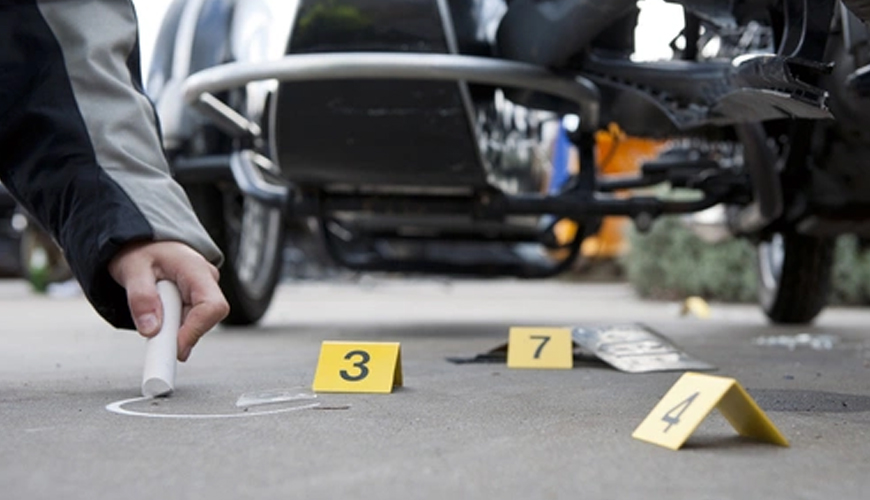
Accident forensics deals with systematic process of investigating, analyzing and drawing conclusion scientifically about the events and factors that lead to a vehicular collision. An accident investigation typically starts with the inspection of the crash scene and also includes inspection of the vehicle and reconstruction of the accident. Accident forensics uses the principles and process of Physics to determine the cause of accident, speed of vehicle, impact direction, etc. and this can be done only by experts who are experienced and specialized to evaluate these factors and evidence using scientific methods and principles. Accident forensics usually required for insurance companies to pay the claims and for law enforcement to determine if the accident was intentional or otherwise and to establish the role of each vehicle contributing to the accident.
We offer services for-
The methods for predicting the impact responses of mechanical systems, such as a vehicle’s response in a crash, can primarily be classified into two groups. In one, the impact is treated as a discontinuous event. A simple form of this type of analysis is usually conducted for accident reconstruction purposes for which each vehicle is modeled as a single body or object. For impact analysis of constrained or jointed systems and also for determination of the structural crash responses of the individual components of a mechanical system, such as the impact responses of the vehicle chassis, suspension systems, steering mechanism, etc., the extension of these traditional procedures are presented here, which involve both normal and frictional impulses, for impact analysis of any general multi-body mechanical system.
When side-slipping starts, the tires makes mark what are called yaw marks, which may have distinct striations within the yaw pattern that are diagonal or even perpendicular to the overall tire mark. Usually, most visible from the outside tires, yaw marks start narrow and get wider as the yaw continues and the vehicle becomes more rotated. In a controlled turning motion, the rear wheels track inside the front wheels. In a yaw, the front and rear wheels cross over each other, resulting in a characteristic crossover point in the yaw pattern that tells the Reconstructionist it is a true yaw.
It is generally a defense to a claim based on negligence, when a person is suffering from some harm due to his own negligence and asking for the compensation. The concept of contributory negligence is used to characterize conduct that creates an unreasonable risk to one’s self. Negligence is a term used to characterize conduct that creates an unreasonable risk of harm to others. If a person is negligent, and his negligence causes another person to become injured, then he is legally responsible for paying damages.
Paint chips are transferred in car accidents, either from one car to another or, in the case of a hit-and-run, from the car to the victim. Paint chips on cars; it is often the undermost layer of the surrounding paint that is most informative; great care has to be taken to preserve it. Matching chips with flakes of paint that have been knocked off a vehicle can be important individualizing evidence, so great care must be taken not to disturb any features of the surface during evidence collection to allow an accurate match. An examination using spectrographic and X-ray diffraction methods may be made of the layers of the paint separately. These examinations yield evidence about the chemical identity of the various layers of the paints. In cases where both chemical and physical examinations are possible of a fragment of paint, the evidence is often conclusive.
Perhaps the most useful pieces of physical evidence found at the scene of an accident are pieces of glass. These pieces of glass can later be matched with the pieces of glass remaining in the headlight, parking lights, or windshield of a suspect’s vehicle. This is a physical matching and is similar to fitting together the pieces of a jigsaw puzzle. If physical matching fails, the laboratory examination of the chemical and physical characteristics of the glass will yield evidence that this is the same type of glass or at best the same batch of glass, there being many sources of this type of glass and possibly several sources in that area of this batch of glass.
The investigation of vehicle theft often requires the restoration of erased or altered vehicle identification numbers. When the original engine number or chassis number of vehicle is erased and a new number is punched on top, it is possible to find the original number using a technique to restore the erased number. When a metal surface is punched, the metal becomes compressed and deformed this resulting disturbance in metal. The resistance to oxidation and acid is very low. The effected part reacts with acids more than the unaffected area.